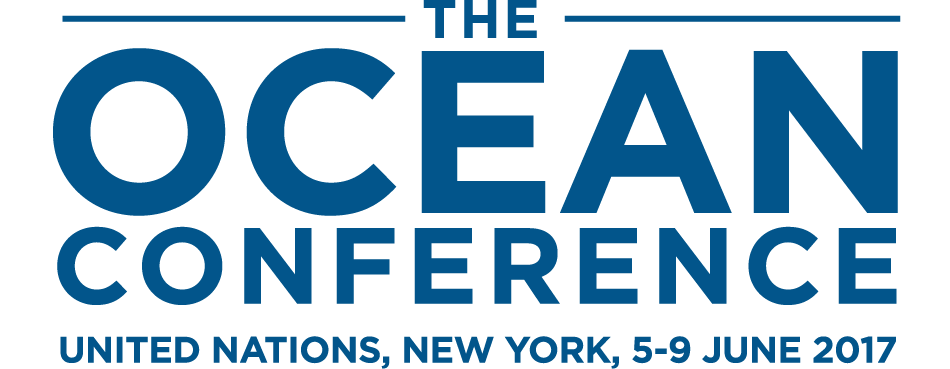Daily report for 16 July 2018
2nd Part of the 24th Session of the International Seabed Authority
On Monday, 16 July, the Council of the International Seabed Authority (ISA) addressed in an informal format the financial model under the draft exploitation regulations, focusing on:
- options for a financial payment system for polymetallic nodules;
- the implementation of the common heritage principle in the context of the payment system; and
- the inclusion of environmental costs in the payment system.
Opening
Council President Olav Myklebust (Norway) opened the meeting, underscoring considerable progress achieved on the draft exploitation regulations and the important task of implementing the common heritage principle. ISA Secretary-General Michael Lodge (UK) underlined the ISA’s mandate not only to regulate seabed mining but also to promote research and capacity building. He noted increased participation in Council meetings and an increased number of side-events.
Secretary-General Lodge outlined a proposed indicative programme of work, noting that the report of the LTC meeting, held immediately prior to Council’s Part II, is to be circulated on Wednesday or Thursday, due to the time needed for translation. BRAZIL and CHILE expressed concern about discussing the draft regulations before the LTC report is circulated. Secretary-General Lodge drew attention to a separate LTC note, issued on 10 July, describing LTC’s recent work on the regulations (ISA/24/C/20). President Myklebust proposed sharing the LTC report in English on Monday, while it will be translated as soon as possible, and holding discussion on the basis of the LTC note already issued.
Elections
Alfonso Ascencio-Herrera, ISA Legal Counsel and Deputy to the Secretary-General, introduced documentation on the election to fill LTC vacancies (ISA/24/C/16-17). Delegates elected Martín Mainero (Argentina) and Shengxiong Yang (China) as new LTC members.
Draft exploitation regulations
LTC Chair Michelle Walker (Jamaica) reported on the LTC work during the 24th Session on the draft regulations. She raised as issues requiring the Council’s attention, inter alia: application of the common heritage principle in the context of assessing plans of work; timelines and deadlines; matters related to sponsoring states; standards and guidelines; LTC-suggested amendments to plans of work; and terminology. She highlighted as themes requiring further guidance from the Council: structure of the draft regulations; balance of rights and obligations; certainty and flexibility; the role of the Authority; confidentiality of information; and annual fixed fees. CHILE underscored that the LTC Chair’s oral report did not elaborate on the issues identified.
MIT presentation: Richard Roth, the Massachusetts Institute of Technology (MIT), delivered a presentation titled, “Update on Financial Payment Systems: Seabed Mining for Polymetallic Nodules.” He discussed methods to assist the Council in making informed decisions, addressing: review of seabed nodule mining; outline of the decisions facing the ISA; cash-flow approach; goals for dividing up the revenues; and payment mechanisms, notably ad valorem (a royalty on the minerals found in the nodule) and after-tax profit (a percentage of contractors’ profits). He pointed out the need for financial, regulatory, monitoring and enforcement decisions with respect to the management of seabed resources, noting implications for the financial payment mechanism.
Roth outlined potential revenues and expenses over a contract’s lifetime, emphasizing that: capital expenses (CAPEX) may result in investors waiting 10-12 years before collecting revenue; and investors will only engage in exploitation if discounted future revenues suffice to provide a competitive return on investment. He highlighted the ISA decisions that will affect the cash flow include: contract duration; one-time and/or annual license fees; monitoring requirements, which will impact on contractors’ upfront investment and operating costs; and revenue-sharing.
Roth clarified that revenues will have to be divided among: contractors; the ISA, to cover costs and distribute to member states; and a potential environmental fund for contingencies. Noting that investors require higher return rates for projects with higher risk levels, he stated that deep-sea mining is higher risk than land-based mining, so it would need a higher return on investment, which is typically 15% or higher.
He noted the need to build models that assess all costs and revenues to inform revenue-sharing decisions. He observed that: although there are 100 years of history for metal markets, there is no current market for nodules; and metal markets are highly fluctuating, so long-term forecasts involve significant levels of uncertainty.
Roth also presented on: the price of extracting metals from the nodules, which negatively affects the value of the nodules; challenges in understanding the costs of processing nodules; economic consequences of different processing options; and possible impacts of seabed mining on metals markets.
In responding to issues raised at the March Council meeting, he clarified that the financial model only includes direct environmental costs such as contractors’ costs and environmental bonds, but not monetization of environmental damage. Roth identified among areas for further work: enhancing modeling cases for polymetallic nodules; models for other seabed minerals; and assessment of environmental costs/benefits. He invited the Council to select models for further analysis.
Discussion: In response to questions from Algeria, on behalf of the AFRICAN GROUP, Roth underscored that deep-seabed mining, despite being in geopolitically stable areas, represents significant technological challenges that impact on investors’ buy-in.
CHILE questioned the need for the ISA to investigate return projections or to guarantee a certain level of profit for contractors. Roth responded that this may not be important in an ad valorem system, but the ISA still needs to decide the minimum revenue needed to make mining worthwhile for the benefit of humankind. CAMEROON queried whether the baseline data for the model originated from contractors, the ISA or states. He lamented that the proposed financial model does not completely take into account the common heritage, including its cultural value, in accordance with the letter and spirit of UNCLOS; and questioned the need to provide incentives to contractors. Roth responded that baseline data comes from multiple sources, including historical market data, publicly available price forecasts from mining industry experts, and data collected from investors.
AUSTRALIA asked Roth about the pros and cons of ad valorem and after-tax models, particularly with regard to monitoring and risks, with Roth indicating the after-tax model presents more monitoring difficulties and is more dependent on market fluctuations in terms of financial risks. AUSTRALIA also commented on current land-based mining challenges that could be relevant for seabed mining, such as the relation to metal prices or environmental analyses; and enquired about the kind of analysis necessary for sulphides and crusts. Roth suggested “getting right” the nodules’ model before starting the analysis for the two other minerals.
INDIA recommended taking into account geographic differences, such as variability in the availability of nodules. Roth clarified that the Clarion-Clipperton Zone (CCZ) is the baseline for the financial models, but other regions could also be used. He reiterated the need for data when estimating CAPEX and OPEX (operational expenses), suggesting that the financial community could cooperate by informing the ISA of the average premium required to engage in deep-seabed mining.
CHINA enquired if national taxation was taken into account in the modeling, in the context of sponsoring states’ obligations. Roth explained that a tax to sponsoring states is not included in the model. On a question from BRAZIL, Secretary-General Lodge responded that while the payment system is not a “tax,” the ISA is a unique international organization that collects value from a resource that has special status as common heritage of humankind, which is redistributed to help achieve social goals, such as the Sustainable Development Goals (SDGs). CHILE stressed that royalties are forms of compensation that companies have to pay for using resources belonging to the common heritage, and are different from a tax; and that 100% royalties be allocated to the international community, while the ISA costs would be covered through payments by the countries benefitting from deep-seabed mining revenues. SINGAPORE urged taking UNCLOS principles as the starting point for any revenue-sharing approach, requesting clarification on potential costs for the ISA in implementing the two approaches. Roth clarified that his analysis has not yet assessed costs for the ISA, but he expects that an ad valorem system would entail less monitoring costs.
The AFRICAN GROUP drew attention to their submission on the economic regime in the draft regulations, including a financial model for nodules that could complement the MIT model. THE NETHERLANDS asked if the data that contractors must provide to the Authority can inform the payment analysis and help the Council choose between different options.
Environmental costs: PANAMA raised concerns related to the absence of environmental risk calculations. Roth replied that “normal” costs, such as monitoring and treating slug water, were included, while valuation of potential environmental damage was not, recommending additional expertise to that end. TONGA underscored the importance of understanding the estimated value of the environment at stake to be able to strike an appropriate balance between protection of the environment and sustainable exploitation of resources. The DEEP OCEAN STEWARDSHIP INITIATIVE (DOSI) encouraged the Council to incorporate environmental costs, such as for impact assessments, monitoring and remediation, as well as the value of environmental damage such as lost ecosystem functions and services into the financial model, offering DOSI expertise. She noted critical ecosystem services that could be impaired by mining include carbon sequestration, regeneration of nutrients supporting ocean productivity, fisheries, and biodiversity with possible biomedical benefits, which are of value to humankind. DEEP SEA CONSERVATION COALITION (DSCC) called for integrating environmental costs; underscored the dangers of ignoring costs that are difficult to quantify, such as species extinction, and consequences for future generations; and supported consultations with experts and stakeholders. IUCN stated that the Council is making decisions on behalf of humankind and should consider further investing in research and technology rather than authorizing exploitation now.
Roth explained that the proposed model is “representative,” as it is a combination of present and future data on operational and feasibility costs built through independent due diligence processes. He noted that, in the future, the Council will make decisions on monitoring obligations; and that environmental costs could be included in a separate model, welcoming partnerships to conduct these analyses.
In the corridors
Part II of the Council meeting opened with daylong discussions on financial models for deep-seabed mining, with the presenter joking “NGOs, get ready to attack, this is a purely economic model!” While most participants delved into complex economic options in search of a way to operationalize the common heritage principle, civil society and a few national delegations called for including environmental externalities in the proposed model. Towards the end of the day, one observer raised an even more challenging question, “Should we exploit now or in the future? What do we need to know that we don’t know now to make an informed decision on behalf of humankind?” Heading to an evening side-event on information-sharing, several delegates braced themselves for further complex discussions on the interface of a possible financial model with other elements, including environmental safeguards, of the revised draft exploitation regulations in the days to come.
-->
Specific funding for coverage of the Ocean Conference - June 2017, has been provided by the
XXX, XXX, and XXX
-->
IISD Reporting Services is a division of the International Institute for Sustainable Development (IISD).
Earth Negotiations Bulletin (ENB), ENB+, and Knowledge Management for Sustainable Development
are branches within IISD Reporting Services.
© 1992-2018, IISD Reporting Services. All rights reserved.







